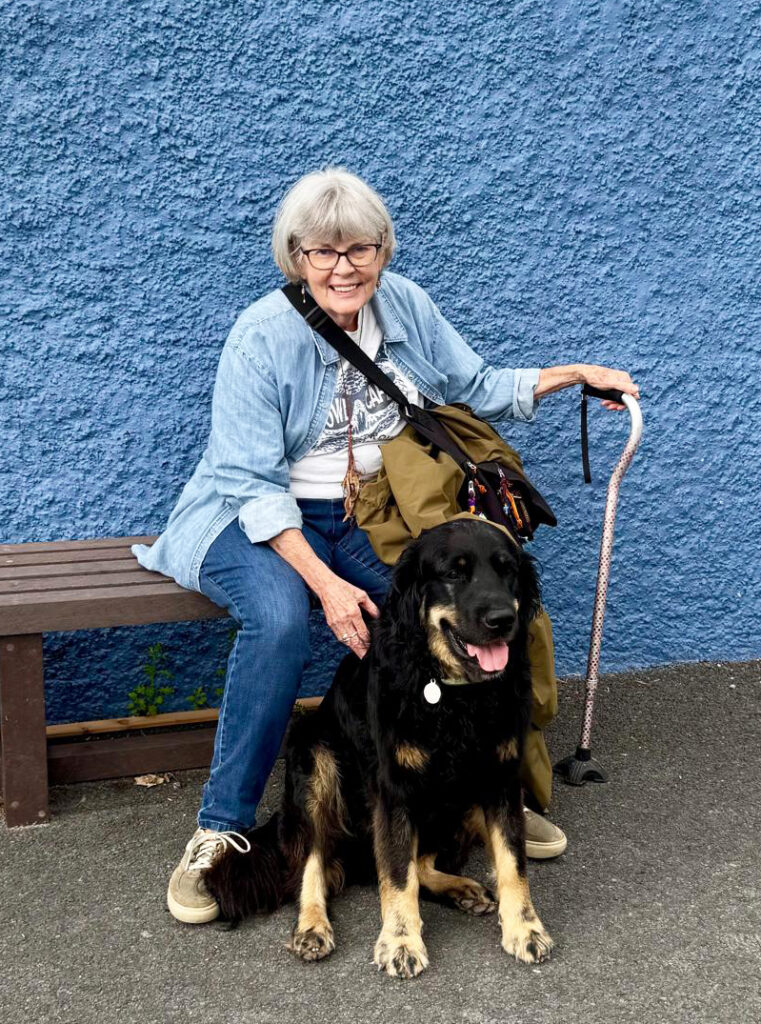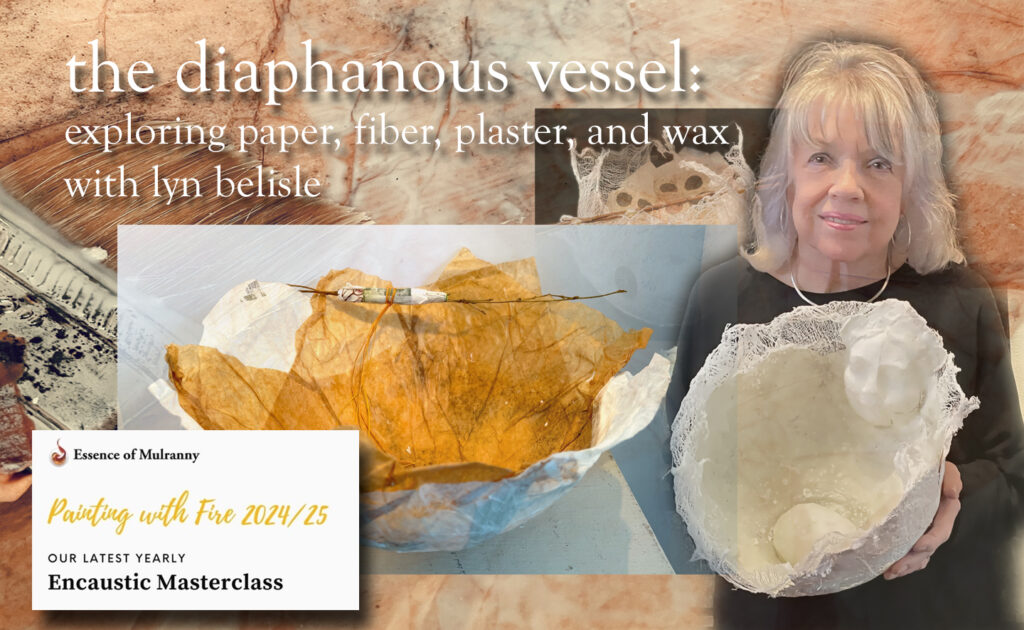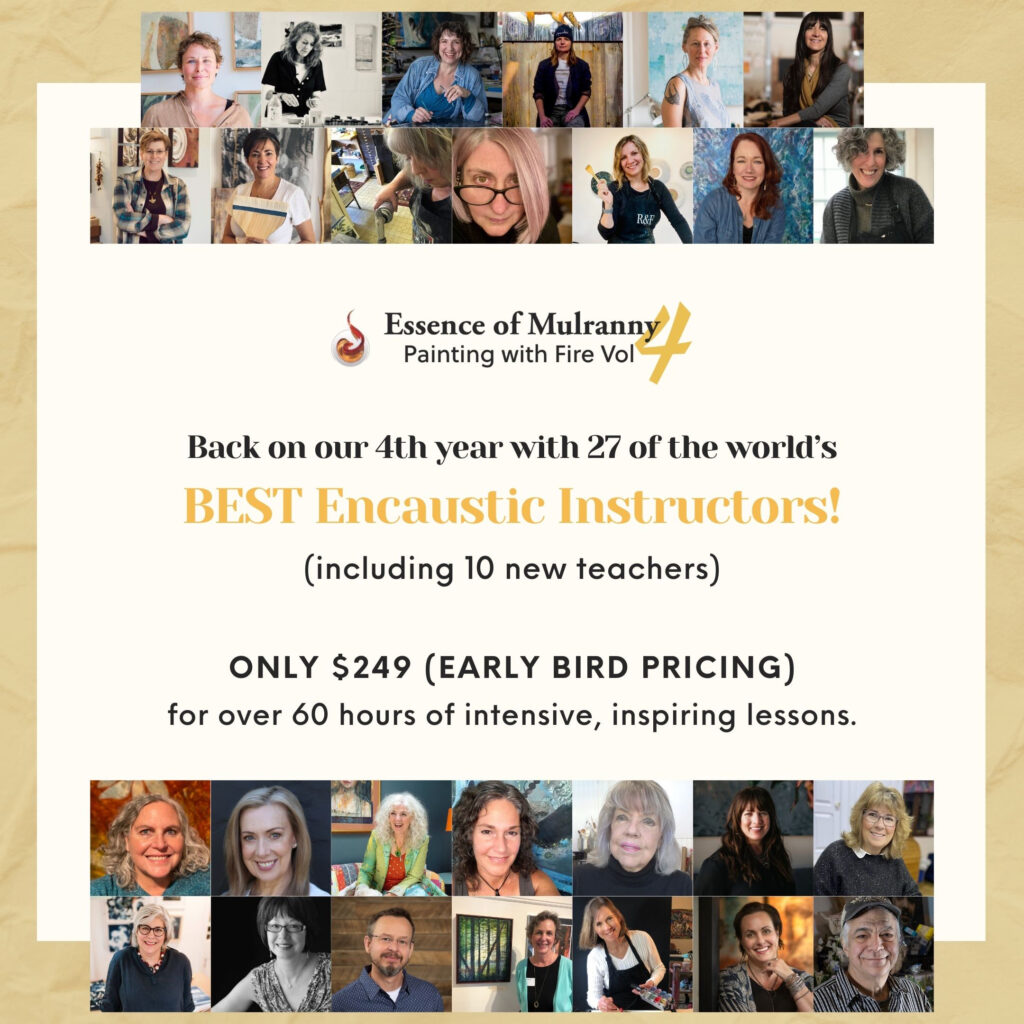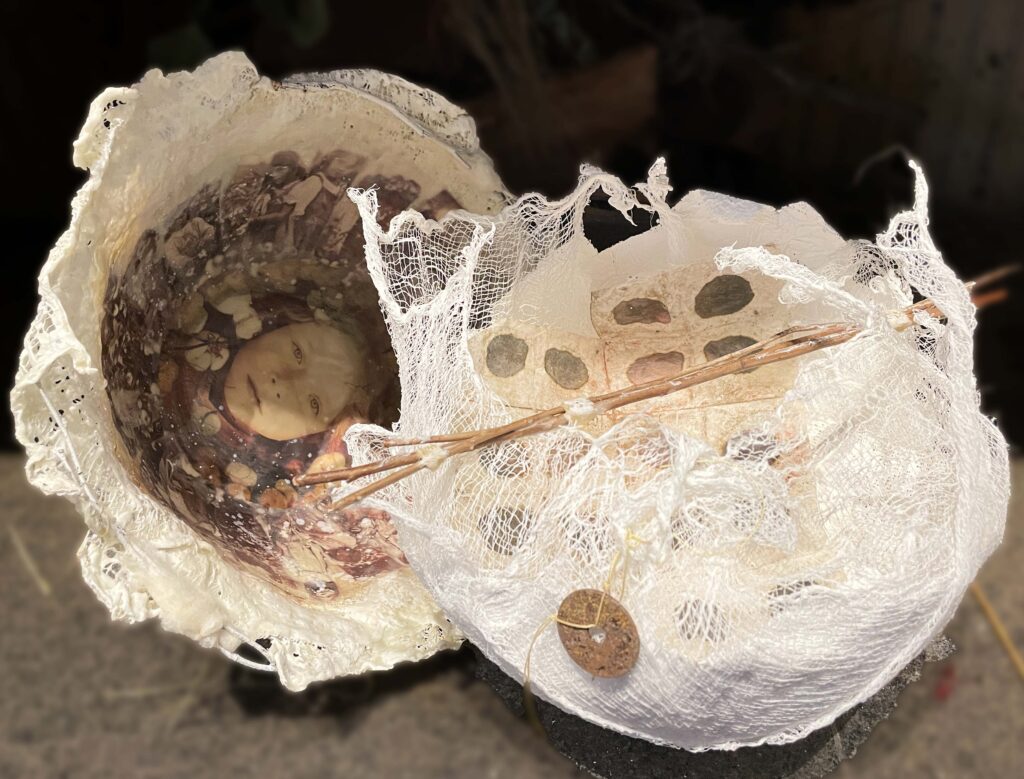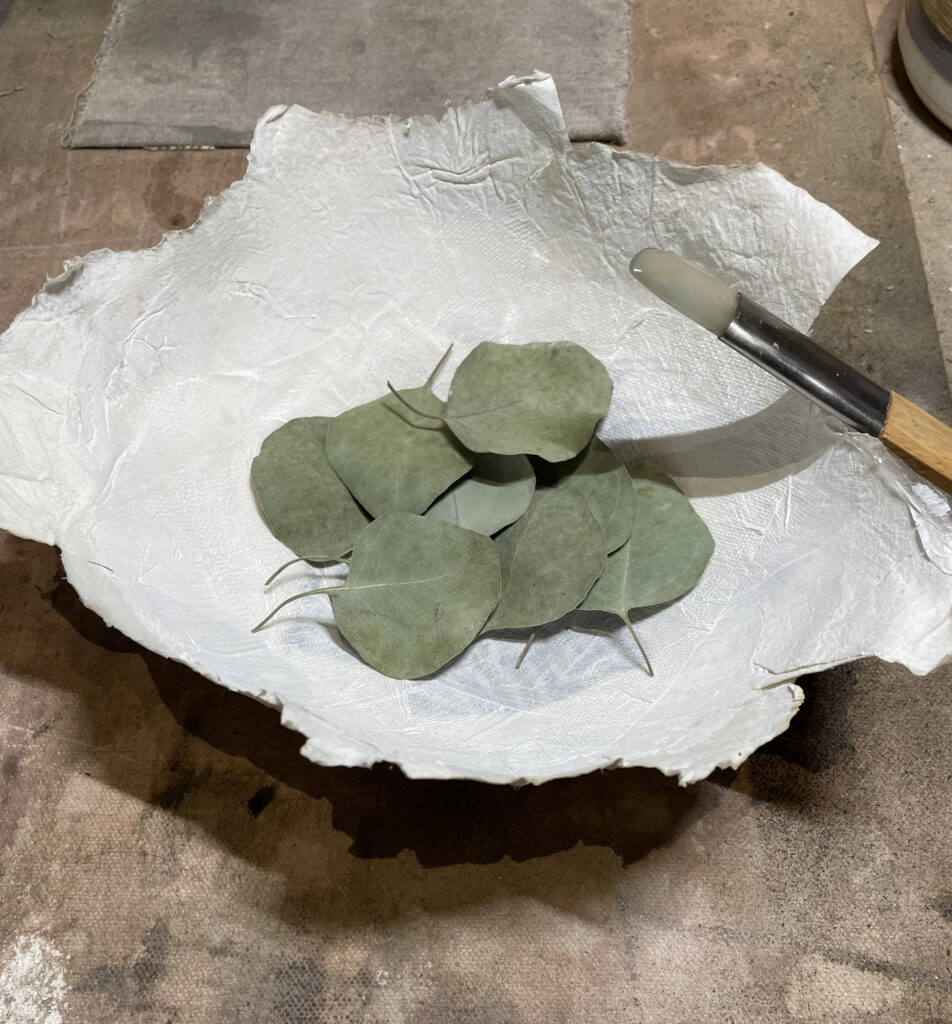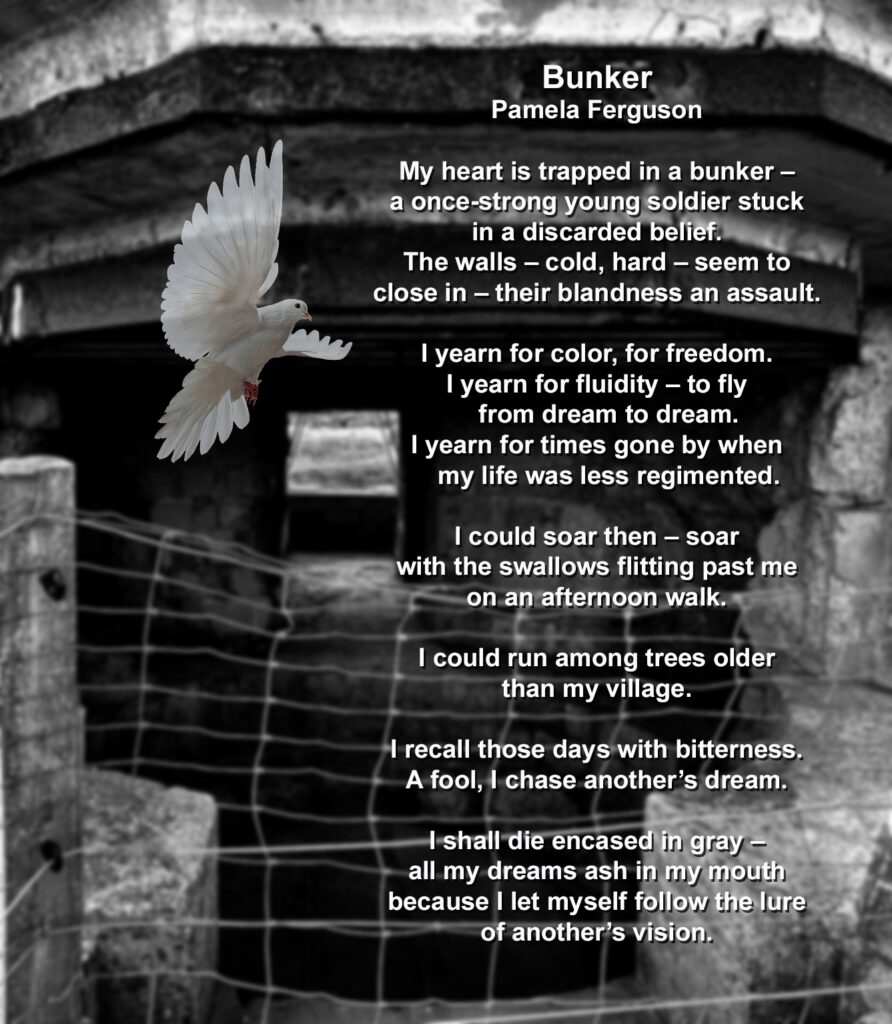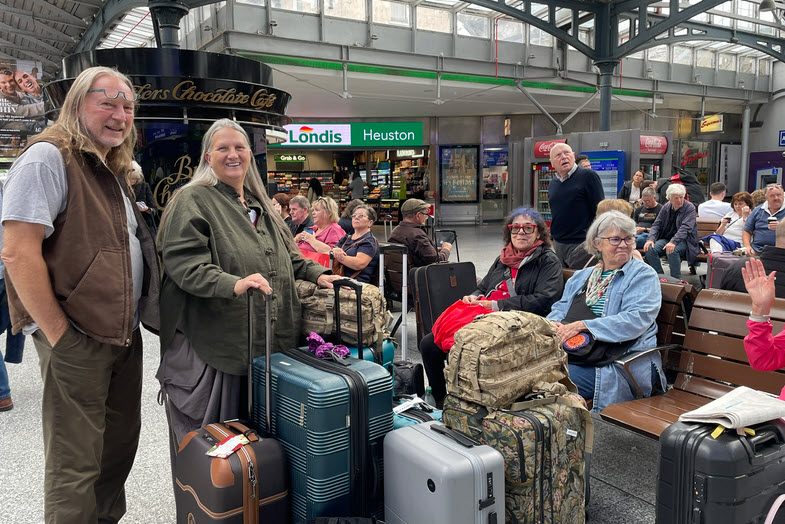
It’s been two weeks since we boarded the train from Westport to Dublin on our way back home from Mulranny. I’m working on a catalog of our work and adventures, and seeing all of the photographs brings back profound lessons that I learned when I was teaching there.
Our group explored not just making vessels in the studio, but also the wild, windswept beauty of the West Coast—the cliffs, sacred wells, narrow paths, stony beaches, and long flights of stone stairs.
One of our group members walked with a cane, and I worried at first that the rough terrain might keep her from fully joining us. But she surprised us all.
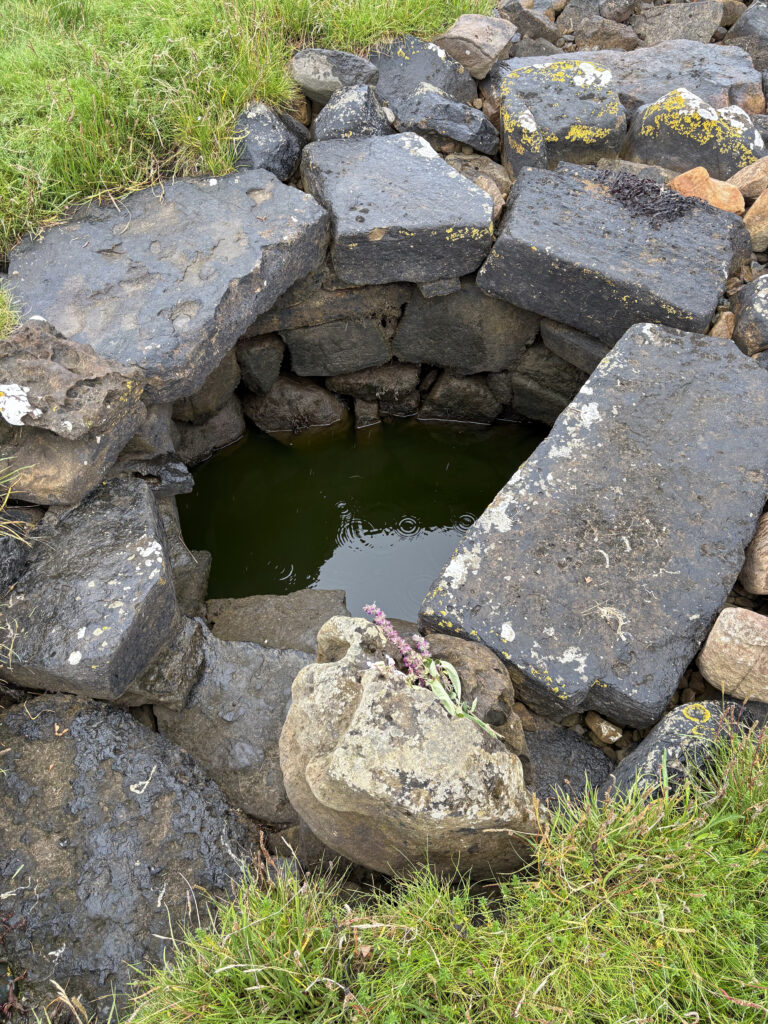
Her cane was not a hindrance. It was a companion. She leaned on it when the path was steep, planted it firmly when the wind blew hard, and carried it with quiet dignity (and smiles).
She never let it define her; instead, she used it as a tool that allowed her to go everywhere everyone else went. Her determination and grace became a lesson for us all.
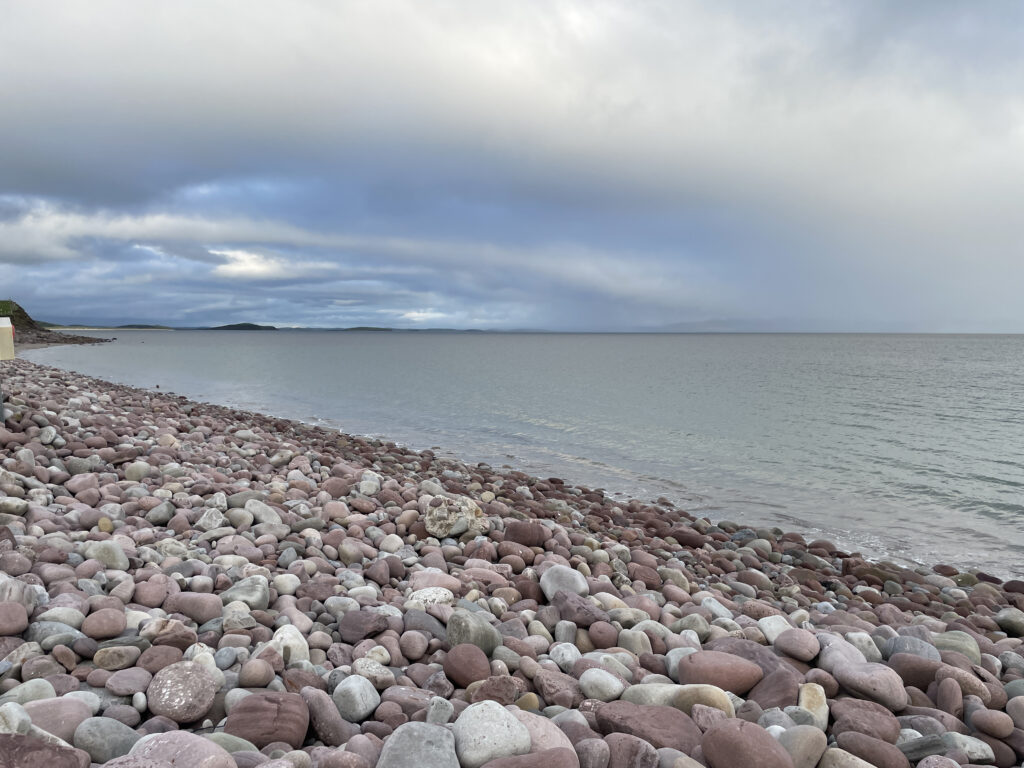
This memory inspired THE CANE Enso Oracle Card, which holds a message not just for travelers in the world, but for travelers in the studio. In our creative practice, the cane becomes a metaphor. Where might I allow myself the gift of support without apology? What “cane” could help me take the next step? Am I resisting help that would make my path easier?
For artists, a “cane” might look like a mentor’s guidance, a trusted book, a workshop that opens new doors, or even a tool in the studio that simplifies what once felt cumbersome. Sometimes it’s as simple as asking for feedback instead of struggling alone, or letting technology carry some of the load so you can stay focused on the art itself.
Too often we equate independence with strength (I know I do), as if needing help somehow diminishes our creative power. But in truth, the supports we lean on—whether people, tools, or practices—are what allow us to keep climbing, to see new horizons, and to carry on when the path grows rocky.
So perhaps the question to bring into the studio today is this: What is my “cane”? What support could I embrace that would allow me to see farther, work longer, and create with greater ease?
Strength isn’t about going it alone. It’s about knowing when to lean, so we can keep walking.
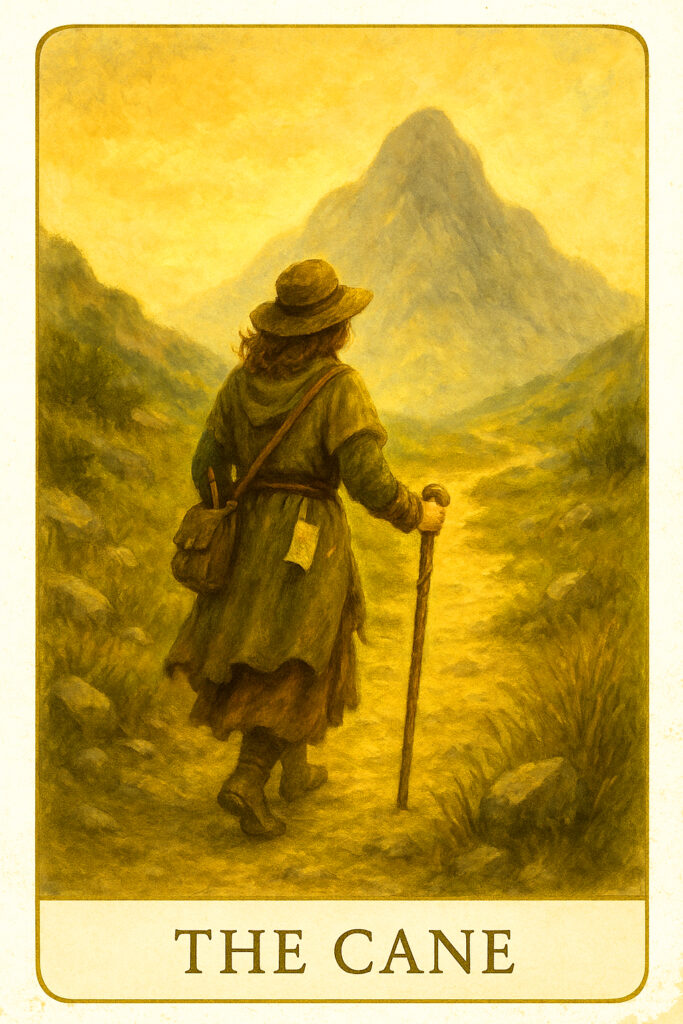
The Cane
Support • Persistence • Courage
The Cane is not a sign of weakness—it is a trusted companion on the path, a staff for the explorer’s hand, a reminder that accepting support allows us to go farther than we could alone. Whether it steadies our steps on stony paths, helps us climb sacred stairs, or simply gives us the confidence to keep moving, it becomes part of the journey rather than a limitation. In art, as in life, the wise traveler knows when to lean on something trusted.
Upright, The Cane speaks of resilience, resourcefulness, and the grace to accept help without apology.
Reversed, it cautions against mistaking stubborn independence for strength—when we refuse the support we need, we risk exhausting ourselves and cutting short the adventure. The Cane teaches that there is no shame in asking for help, only strength in receiving it. Let it be your symbol of determination, your portable pillar, your license to explore the world at your own pace. Every mark you make—whether with a brush, a pen, or your feet—is richer because you carried on.
Reflection: Where might I allow myself the gift of support without apology? What “cane” could help me take the next step? Am I resisting help that would make my path easier?
Affirmation: I welcome the tools and allies that make my journey possible.
______________________________
Reflection for Your Own Practice
Just as my friend in Ireland leaned on her cane to climb cliffs and cross ancient paths, we as artists can lean on our own “canes” in the studio—supports that help us keep moving, see farther, and continue creating without apology. Ask yourself: What is my cane?
Here are some possibilities:
-
A class you’ve hesitated to take because you felt you “should already know”
-
A piece of equipment or tool you’ve postponed buying, even though it would save time or expand your options
-
The act of asking for feedback from a trusted friend, mentor, or fellow artist
-
Giving yourself permission to hire help for tasks that drain your energy (framing, shipping, photography)
-
Allowing technology—software, apps, even AI—to handle the tedious parts so you can focus on creating
-
Joining (or rejoining) a community or critique group for connection and encouragement
-
Setting boundaries around your studio time and asking others to honor them
-
Revisiting a favorite book, workshop, or teacher who once sparked your growth
-
Saying yes to rest and recovery when your body or spirit needs it
Which of these could be your cane right now? And which others could you name for yourself? I know one of mine would be setting boundaries around my studio time – but it’s hard!!
Your “cane” might also be thought of as a staff, walking stick, compass, anchor, lifeline, bridge, or guide—whatever image reminds you that support is not a weakness but a way forward.
True strength in art, as in life, is not measured by how far we can go alone, but by the wisdom of knowing when—and how—to lean so that the journey continues.
Linda, this card is for you!!♥
